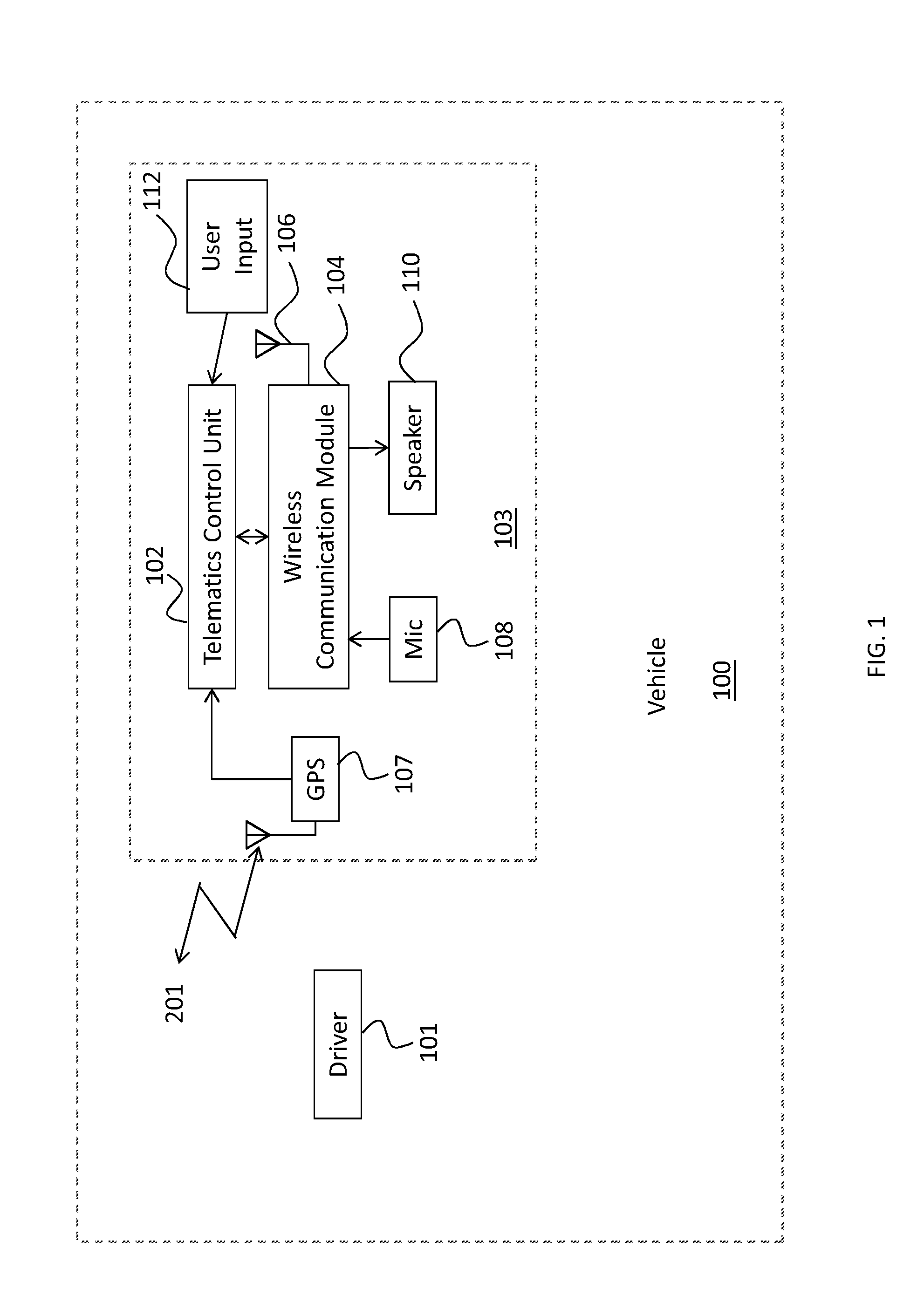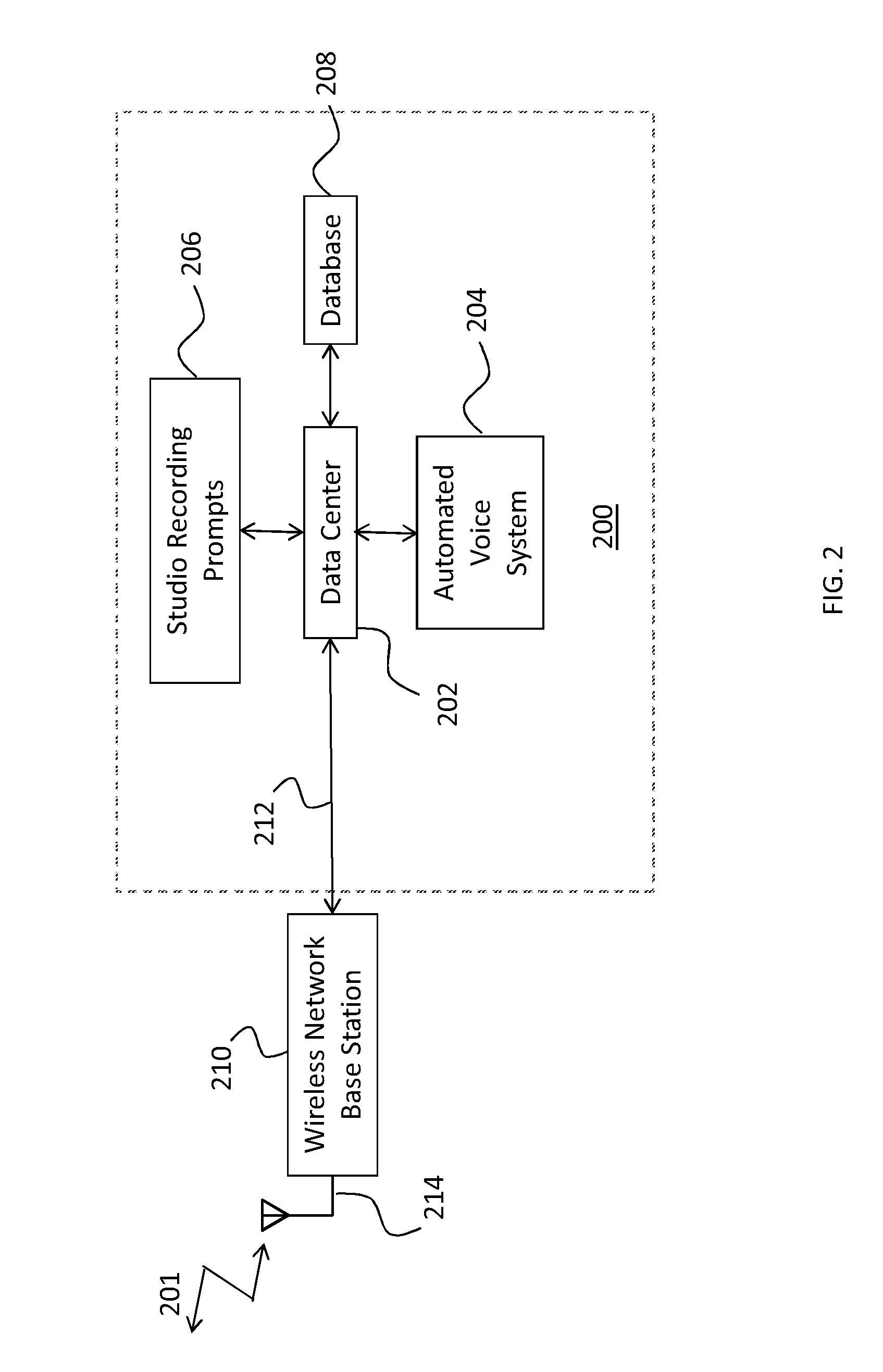Criteria-Based Audio Messaging in Vehicles
a technology of audio messaging and criteria, applied in the field of criteria-based audio messaging in vehicles, can solve the problems of a large amount of physical coordination and analytical skills, and a format that is usually not appropriate for a vehicle driver
- Summary
- Abstract
- Description
- Claims
- Application Information
AI Technical Summary
Benefits of technology
Problems solved by technology
Method used
Image
Examples
example
[0066]Female voice: Telematics service center. How may we be of assistance?[0067]Male voice: Today is my anniversary and I would like to have flowers delivered to my wife.[0068]Female voice: Happy anniversary! I can certainly help you with that. What type of flowers were you looking for and where would you like them delivered.[0069]Male voice: I was thinking of a dozen long stem roses. My wife's address at work is 3232 Main Street, Suite 123, so if they could be delivered before she leaves at 6:00, that would be great. Her name is Susie Smith.[0070]Female voice: No problem Mr. Smith. I have located a flower shop near this address. When we finish this call, I will connect you directly with the shop. Is there anything else I can help you with?[0071]Male voice: There is. I would like to take her to a nice dinner tonight. What are some good restaurants downtown?[0072]Female voice: I have located quite a few highly rated restaurants in that area, what type of food are you looking for?[00...
PUM
 Login to View More
Login to View More Abstract
Description
Claims
Application Information
 Login to View More
Login to View More - R&D
- Intellectual Property
- Life Sciences
- Materials
- Tech Scout
- Unparalleled Data Quality
- Higher Quality Content
- 60% Fewer Hallucinations
Browse by: Latest US Patents, China's latest patents, Technical Efficacy Thesaurus, Application Domain, Technology Topic, Popular Technical Reports.
© 2025 PatSnap. All rights reserved.Legal|Privacy policy|Modern Slavery Act Transparency Statement|Sitemap|About US| Contact US: help@patsnap.com



